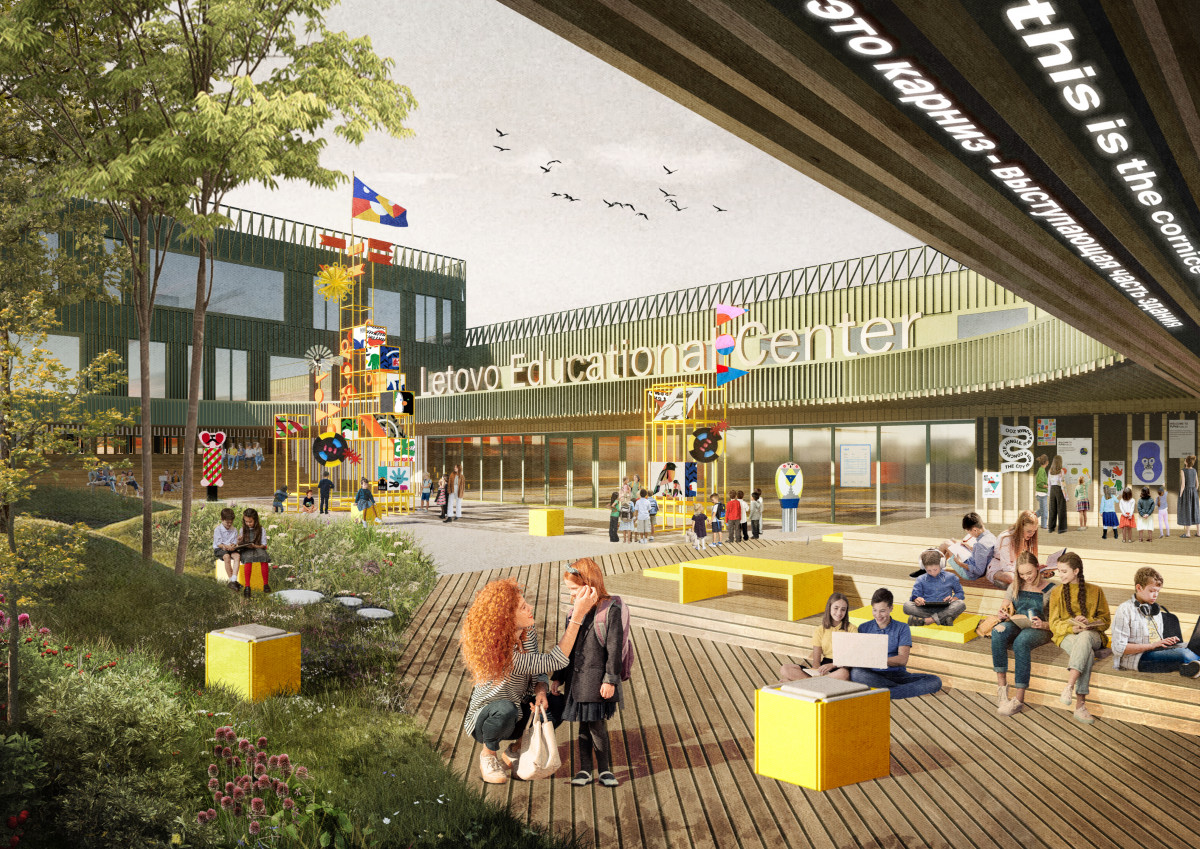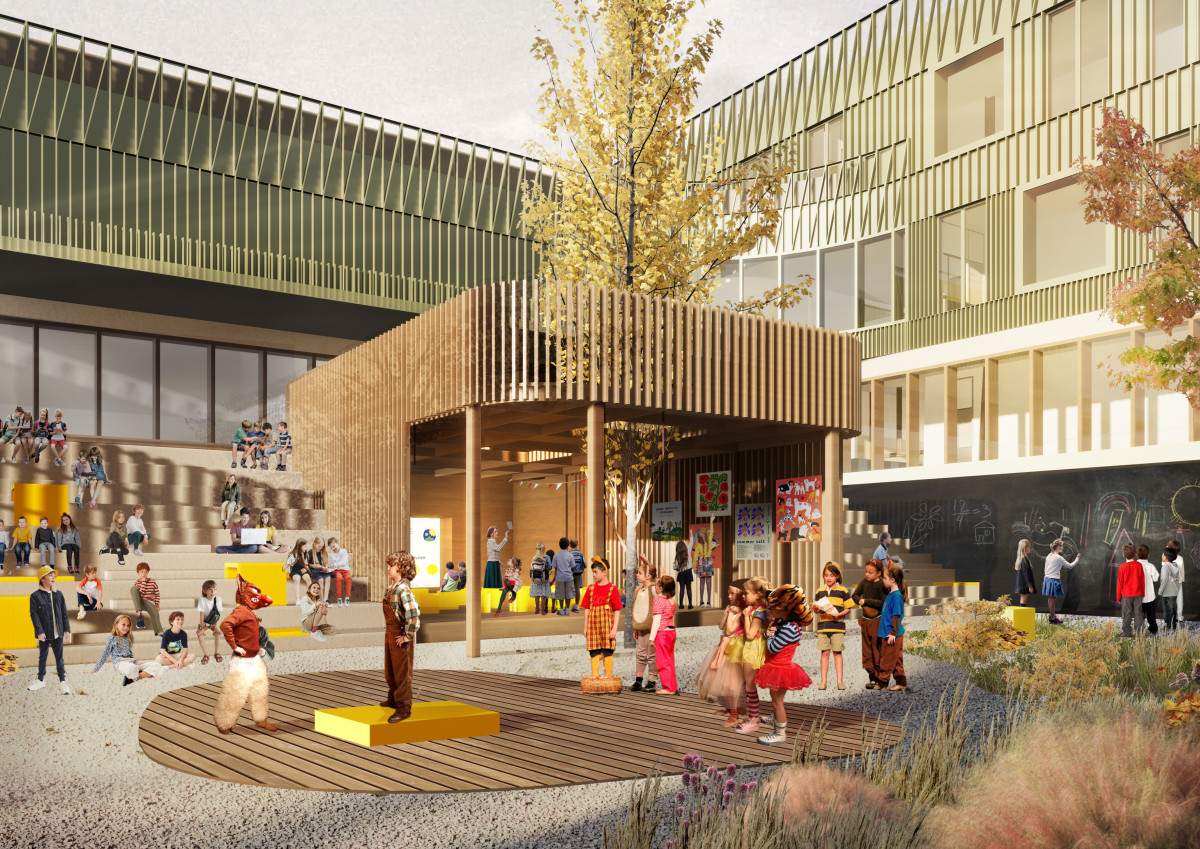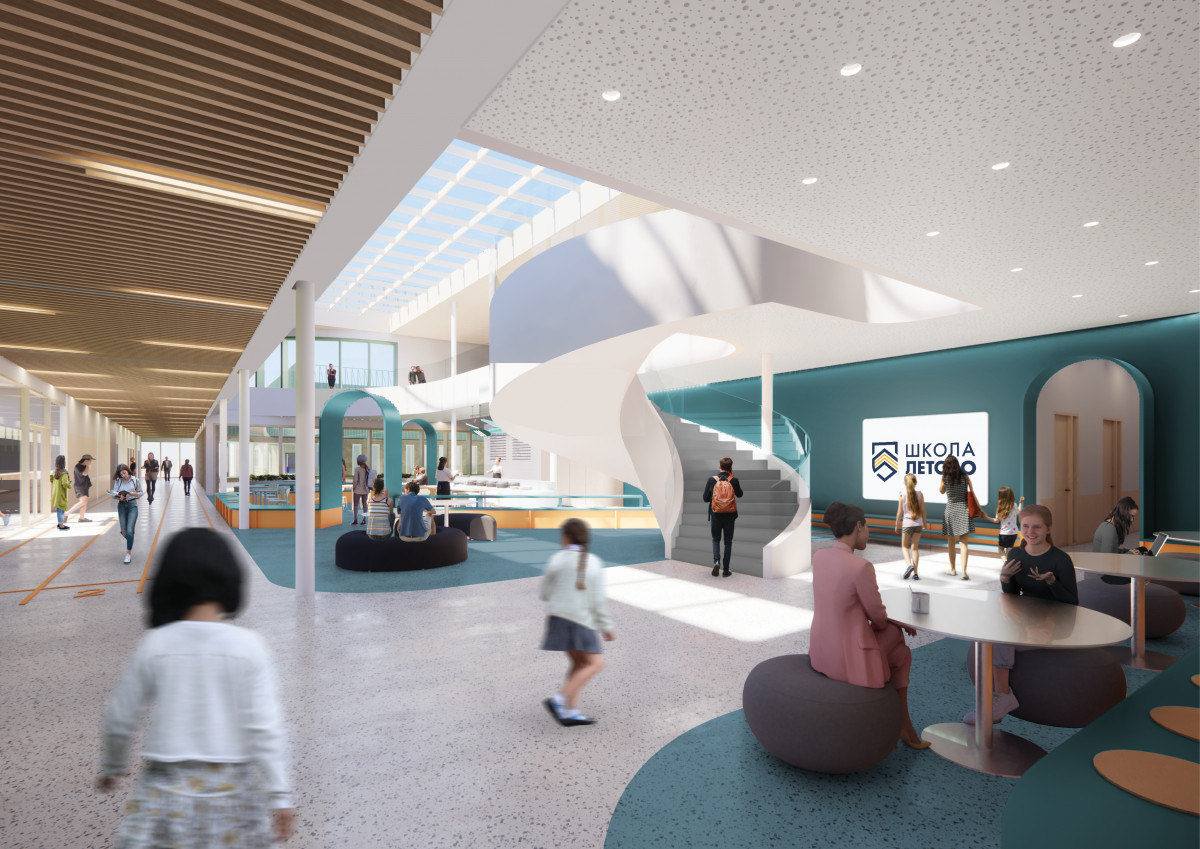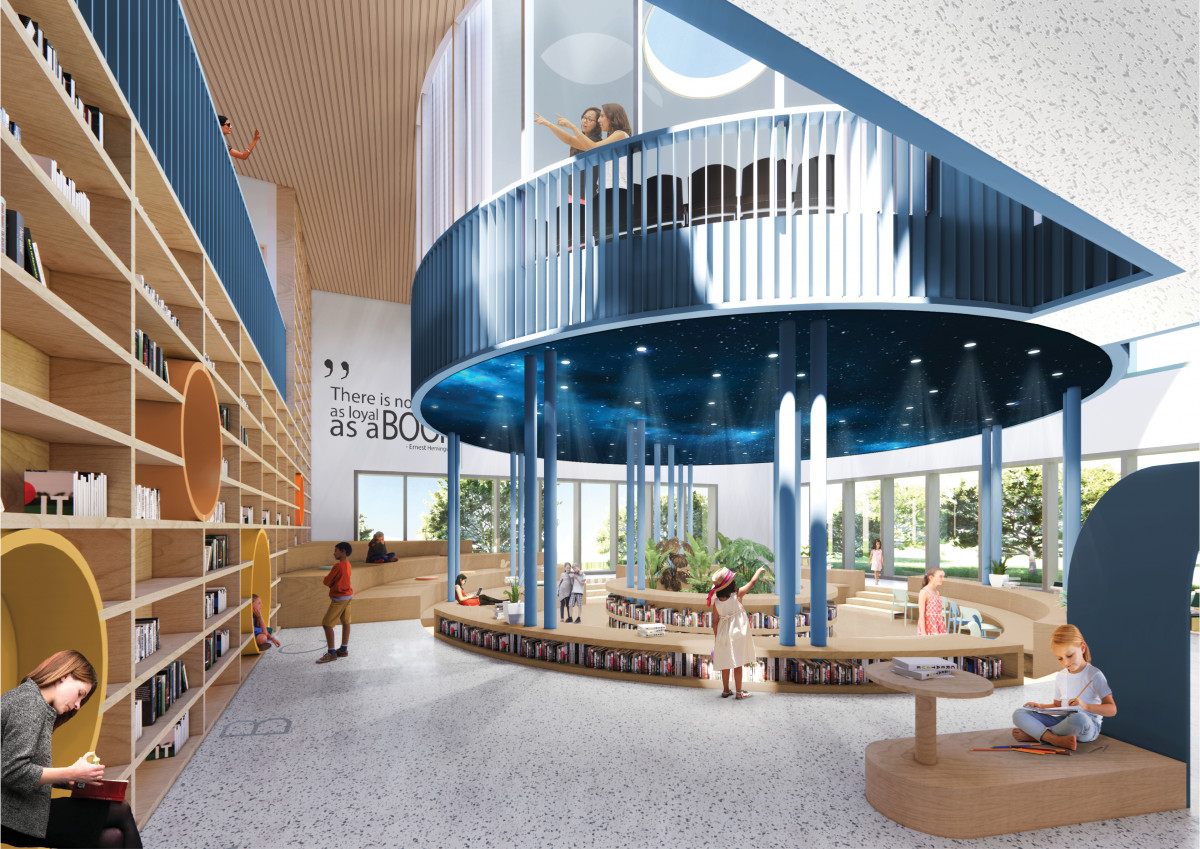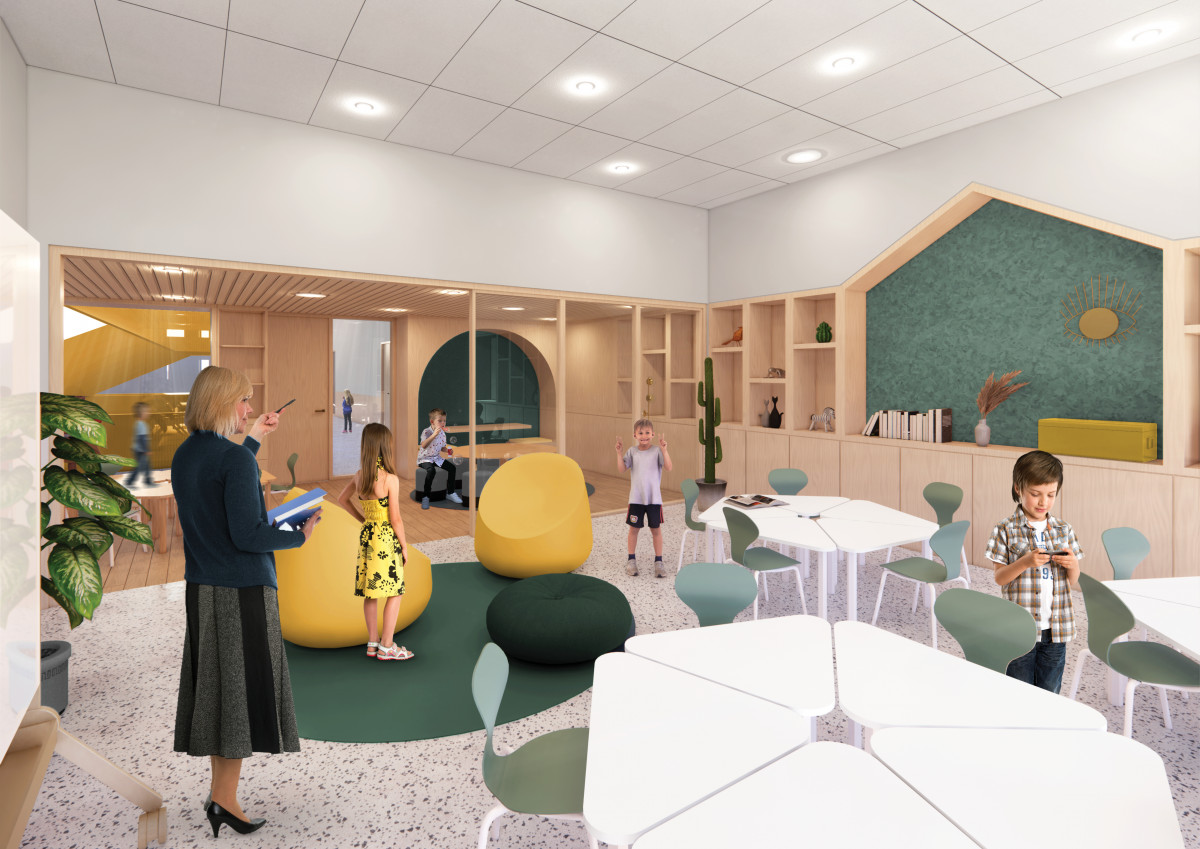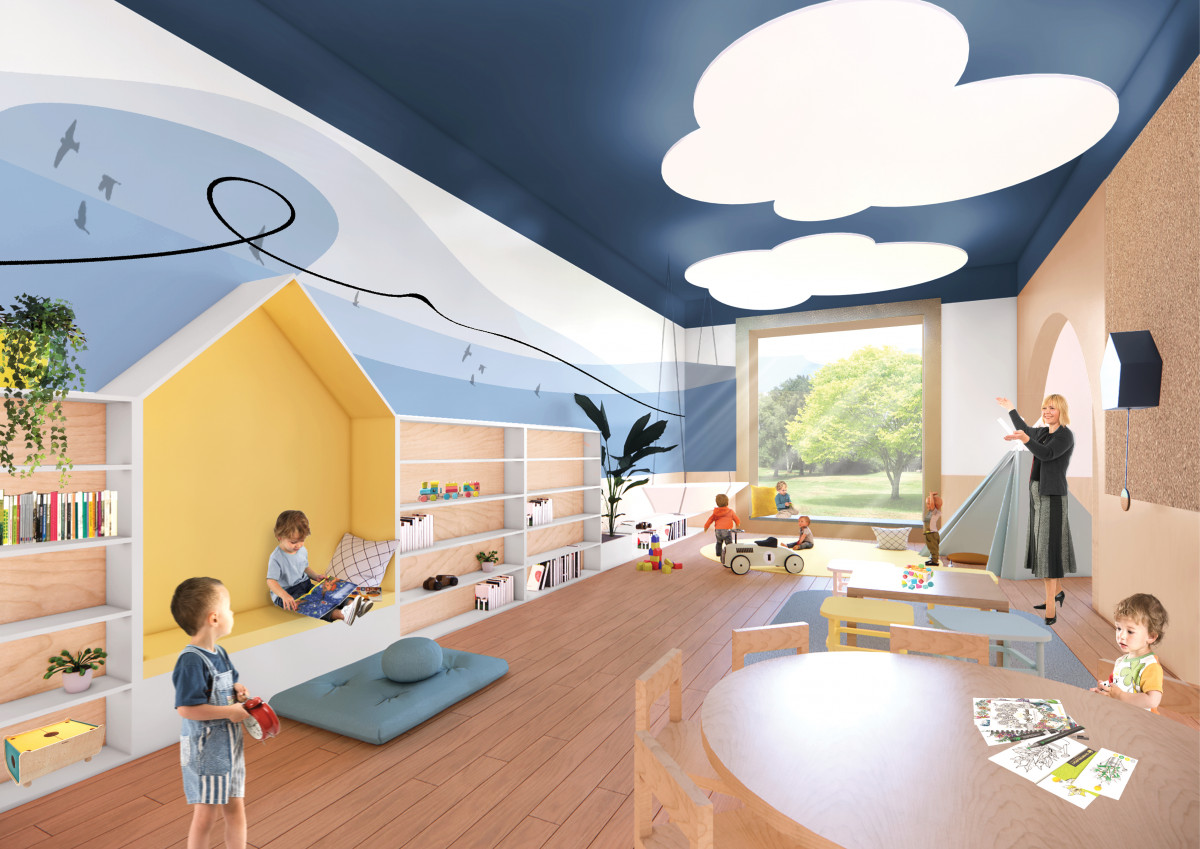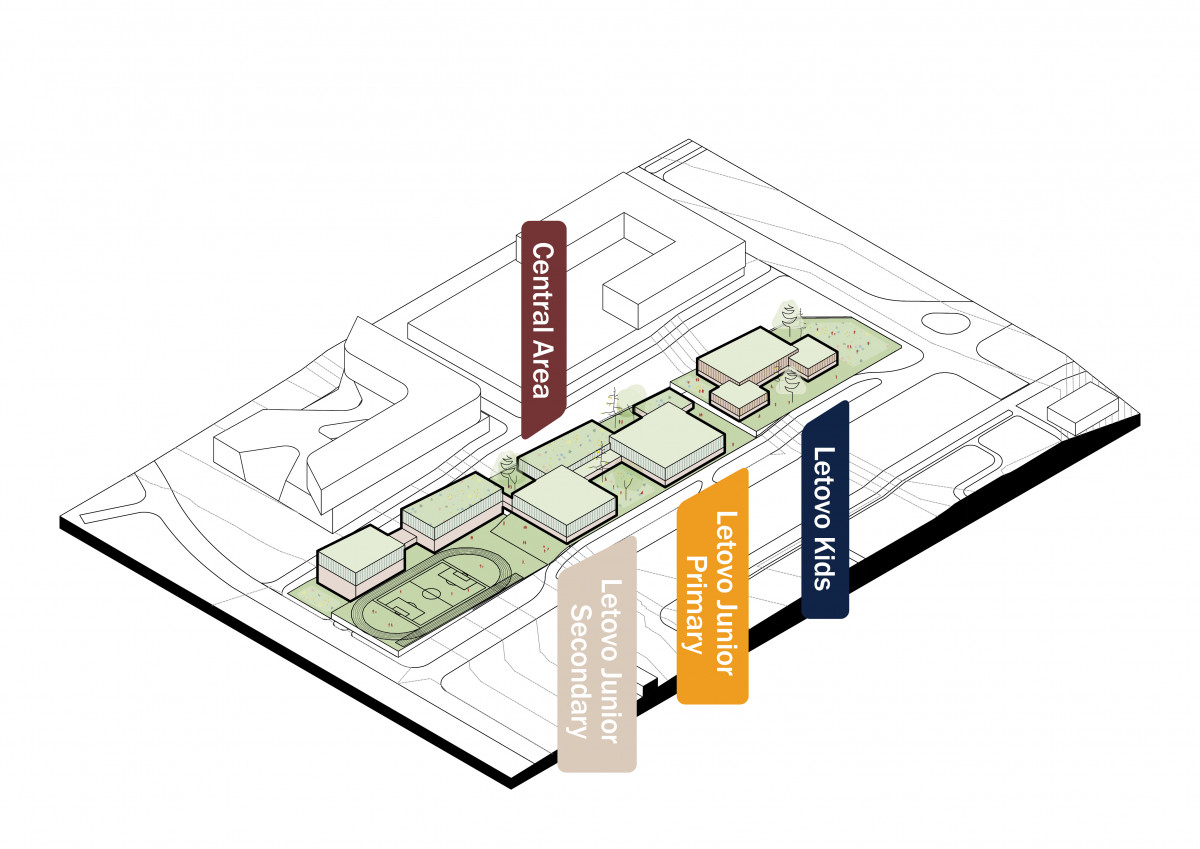Competition
The competition for the Letovo Educational Center in Moscow was initiated by Level Group and aims to design a new education core composed of: Letovo Kids - kindergarten (180 children), Letovo Junior - primary school (400 children) and Letovo Senior - secondary school (200 children).
Atelier PRO ventured into this open international competition with Bureau Druzhba, a Russian architectural office. and we are both proud to be the selected winners of this ambitious project.
Our concept is based on the idea of a continuous educational landscape, where each element of the school contributes to the learning process and interaction between students. Responding to current and future needs, the new Letovo Education Center will also act as a green oasis for the neighborhood. Nevertheless, great attention has also been given to fire issues and logistics, as these are critical for the good functioning and feasibility of the whole design proposal.
Site
The design area covers a site of 3.46 hectares. The height difference on the site reaches up to 14 meters. In our concept, we took into account this peculiarity of the landscape and we proposed dividing the territory into different levels on which courtyards and functional blocks of the school and kindergarten are located. For optimal insolation, the kindergarten is located at the highest level on the north of the territory. The primary and secondary schools occupy most of the territory and are located in the center of the site.
School organization
The schools consists of 5 compact modules tied together by a central corridor, or big alley, that unites all functional areas. The displacement of the blocks relative to each other allows the creation of compact school yards.
The functional organization consists of a simple principle. Both the Primary and Secondary school pupils need to access the Central area on a simple way. The tripartite of this program was for us the reason to start with a simple scheme where, obviously the Central area is placed in-between the Secondary and Primary premises.
Kindergarten organization
The program of the Letovo Kids is a bit smaller, but not less complex. Besides the group rooms for the 3-6 year old children, a theatre, gym, library and swimming pool are part of the program for this future kindergarten. The functional organization consists of a similar principle as the one of the schools. The most central program is placed in between the group rooms in order to keep the walking distances to these common functions short and clear. By shifting the central volume to the back, a clear entrance is created and a diversity of outdoor spaces automatically is generated.
Just like the Letovo Junior school complex, a central axis connecting all three blocks is creating a clear wayfinding for both the children, their parents and the staff of Letovo Kids.
Landscape
The outside space is exceedingly important for children’s psychological comfort growing up in the big city. Therefore, the base of the outside space is a diverse, eventful, exciting natural landscape, which is very different from the city landscape.
“Learning environment as three-dimensional textbook” (Anne Taylor) – is a common idea in the educational community that we applied in the school and kindergarten environment. The environment is turning into a full-fledged educational tool for a teacher. All technological processes and engineering communications appear to be a part of the educational process and start being visible for the students. This layer makes use of digital and manual forms of presentation.
At the same time, we comply with the parameters of safety and separation of children by age in different zones, convenient observation of children, but we also create places where communication of different ages is possible, which is very valuable from the point of view of child development.
There are several courtyards in our concept, freely organized spaces for communication and creativity. The natural landscape in the center of each of the courtyards is surrounded by the "inhabited facade" of the schools. Instead of a blank wall of the building, there are street classrooms, amphitheaters, surfaces for creativity and exhibitions.
Facade
The new Letovo Educational Centre will be like an oasis in the masterplan of the environment where glass, concrete and metal are dictating the image of the surrounding.
Our proposal is to create a building where the plinth merges with the soil and the green ceramic facade of the Letovo Junior school building is merging with the green environment. In fact, our goal is to create a school building as a landscape. Even though the Letovo Educational Centre is both the Kids and the Junior building, we wanted to create a similarity between both buildings, yet a clear distinction between both. It is important that each child can recognize their own school or kindergarten! The lamella structure strengthens the height of the buildings and a playful crown along the roof triggers the imagination of the children. In terms of flexibility, the lamella structure is based on the main grid of 8,1x8,1m, varying between 150mm, 300mm and 600mm wide. This gives the interior design a flexibility where the interior walls can be placed in a multitude of choices.
“Each project of this kind is a contribution to the development of education in Russia, setting a benchmark for the market and promoting the highest level of requirements for the architecture of schools and kindergartens. We hope that the competition and its results will allow us to establish a good tradition of gathering the best minds from the architectural (and educational) world to create schools where children can spend a happy childhood, and then become successful and comprehensively developed adults." - Alexander Zaltsman, Citymakers Project Manager.
Publications
Archdaily selection of Best Unbuilt Architecture highlights projects


